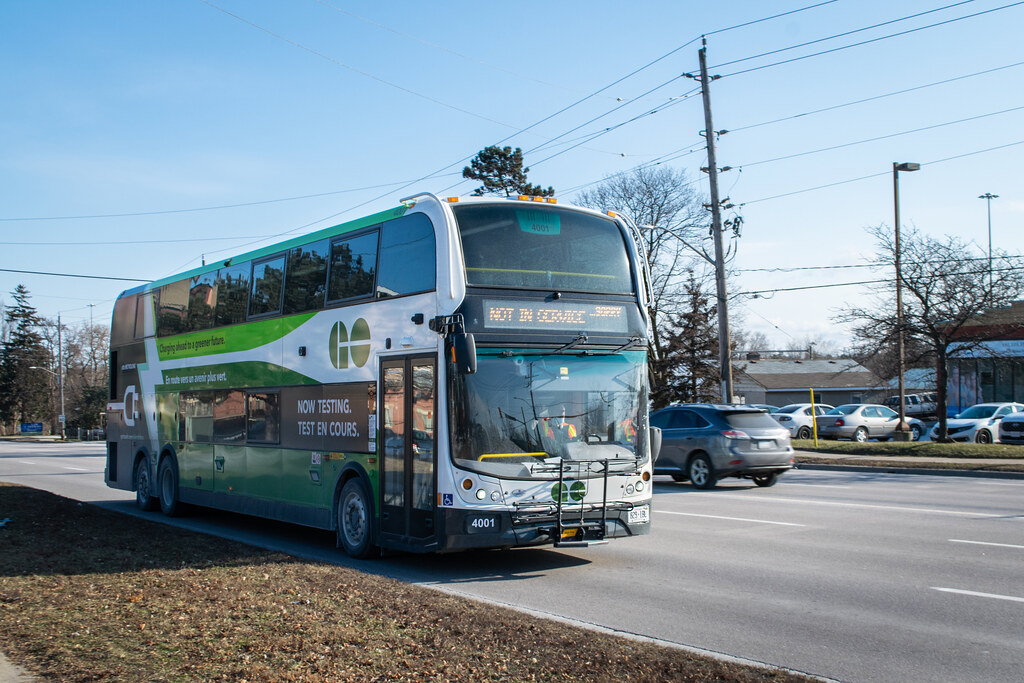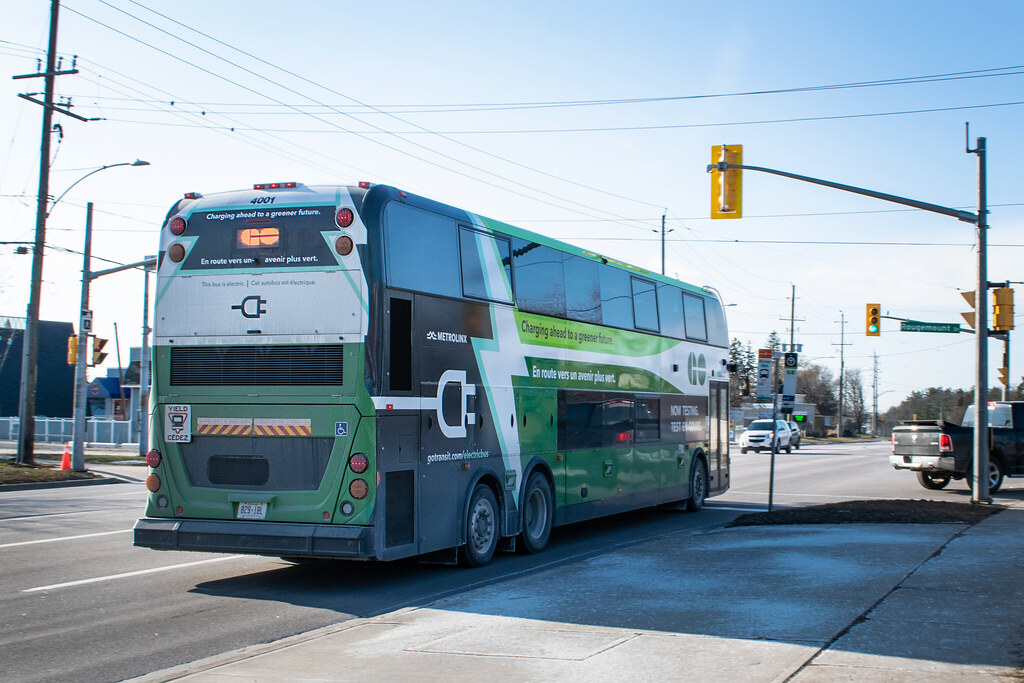NEWS RELEASE
Ontario Launching Electric Vehicle GO Bus Service
Province expanding new transit options with zero-emission technology
May 12, 2023
Office of the Premier
OSHAWA – The Ontario government is bringing two new fully electric zero-emission GO buses into service for the first time as part of its plan to support electric vehicles, reduce emissions and expand clean, green transit options across the Greater Golden Horseshoe.
“The launch of these electric buses marks a significant milestone in our government’s plan to be a global leader in the electric vehicle revolution,” said Premier Doug Ford. “We’re building a strong electric vehicle supply chain, securing game changing investments in electric vehicles and battery manufacturing, and getting more electric vehicles on the road. The future is electric and we’re leading the charge.”
Starting May 15, commuters on GO bus routes 19 (
Mississauga/North York), 27 (
Milton/North York), 92 (
Oshawa/Yorkdale) and 96B (
Oshawa/Finch Express) will have the opportunity to travel on the zero-emission buses. The buses will be identifiable by their unique exterior, which features a lightning bolt. Once onboard, commuters will experience a quieter ride and have access to USB chargers and seatbelts.
“These electric vehicle buses are an exciting new transportation option, bolstering the presence of zero-emission technology in Ontario,” said Caroline Mulroney, Minister of Transportation. “As we deliver on our plan to get Ontarians moving, we will continue to leverage clean-energy opportunities that are good for people and good for the environment.”
The new electric vehicle GO buses have been in the testing phase without passengers since December 2021. As commuters travel on the new buses, the province will continue to evaluate feedback to help inform the potential future expansion of the program and our Made-In-Ontario strategy to procure electric vehicles and low-carbon equipment.
Quick Facts
- The results of the initial testing phase were considered when routes were selected for revenue service, to help ensure the buses return to the garage with 20 per cent battery capacity. Testing has shown that these buses can travel about 225 kilometres in colder temperatures and about 300 kilometres in warmer temperatures without needing a charge.
- Each bus is powered by nine batteries and can be fully charged in approximately three to four hours. The buses will be charged at the Streetsville (in Mississauga) and Steeprock (in North York) GO bus garages.
Quotes
"As Ontario launches fully electric GO bus service, riders are going to enjoy a quieter ride, powered by our world-class clean electricity grid. As a global leader in the electric vehicle revolution, this new option represents another step in our work to support electric vehicles, reduce emissions and expand clean, green travel options."
- Todd Smith
Minister of Energy
"We are taking positive action to ensure Ontario continues to be a leader in clean, green growth in Canada and around the world. We will continue to work with our partners like Metrolinx to explore options for clean, green transportation now and in the future."
- David Piccini
Minister of the Environment, Conservation and Parks
"Over the last two and a half years, Ontario has attracted over $25 billion in automotive and electric vehicle battery related investments that strengthen our electric vehicle supply chain. Starting to electrify the GO Bus fleet is another way we’re showing the world our leadership in electric vehicle technology."
- Vic Fedeli
Minister of Economic Development, Job Creation and Trade
"Metrolinx supports the Ontario government’s stewardship in bringing more green transportation options to bus services. Transit is by its nature inherently more sustainable. Through innovative eco-friendly solutions like electric vehicles, we will be able to further lower greenhouse gas emissions and expand sustainable travel options throughout the Greater Golden Horseshoe."
- Phil Verster
President and CEO of Metrolinx
Additional Resources






